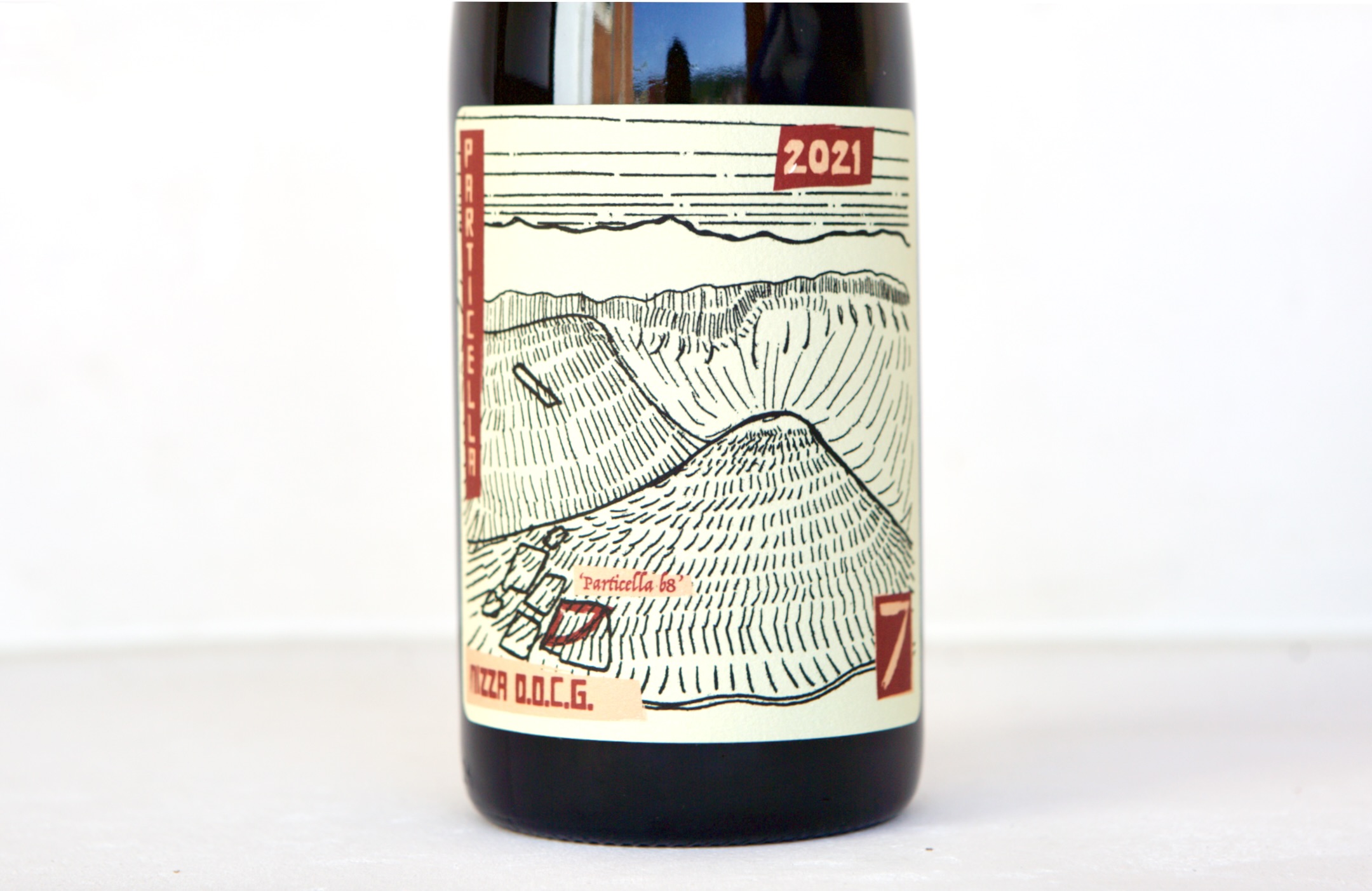
I just returned from a month in the States. With jet lag finally in the rearview (I think), I’m finally clear-headed enough (I hope) to write without tossing everything out at the end of the day and starting this over tomorrow, or the next day. TBD.
New York was the first stop. Five sleepless, full-throttle days of cooking, pounding pavement with the wine bag, and then our first “Rarities Flight Tasting” in New York—a tasting featuring most of the tiny-production wines worthy of a better showing than just jostling inside the bag for a day or two of visits. Like we’ve done for almost a decade in California, we poured about ten flights of four wines each for a group of thirty staggered over several hourly reservation slots. The room was generous, engaged, and thankfully patient and appreciative of our self-paced, sit-down format with reams of information on each producer and wine. We were on the run and sweating, but the heaviest lifting was already done in the vineyards, the cellar, and the growers’ minds.
New York is notoriously competitive, and I knew it would be hard to find a way into our first engagements there. And it’s true, there’s a lot of noise to rise above and scaffolding poles to dodge. But as I sunk into my window seat from JFK destined for LAX with my eyes looking out for a shot of Lady Liberty (which I’ve still never laid eyes on), what stayed with me wasn’t only the exhaustion from the five days and the jetlag from Spain’s time zone not yet resolved, it was the fact that of the fifty or so buyers I spent time with, most weren’t native New Yorkers. They’d come from all over the world and other states. And rather than letting the door hit them on the way out, they were warm, curious, and welcoming. Many remembered what it was like to be new to the City and offered the kind of reception they’d received or at least wished they’d gotten. The native New Yorkers were enthusiastic, but I also understood that spring was starting to assert itself with greening trees and flowers budding. Everyone was certainly happy to see the sun again.
Of course, these open doors came thanks to Remy, our indefatigable wine sherpa who schleps weekly box after sample box up four flights of stairs through many tightly hinged doors, and then up a very narrow and steep flight to the second floor on top of his fourth-floor Brooklyn apartment. Like our tight-knit team in California, he’s built honest and meaningful relationships, and it’s hard to deny his passion for everything connected to wine. He’s also met 90% of our growers now and speaks not just for us and his view, but also for them and theirs. Our growers are the spark behind our enthusiasm, and for those with whom we were fortunate enough to pour and share some stories, many of the wines landed well.
I always joked that I preferred to fly over the U.S. from California on my way to Europe without stopping, but after this trip, those days are over. I realize now what I’ve missed by not engaging with New York sooner. It’s not just the restaurants, bars and awe-inspiring metropolis that impress me. It’s the people! There are so many uniquely incredible places in the U.S. and the world, but I never imagined I would feel just as at home in the Big Apple as I did last summer at my thirtieth annual high school reunion in Montana. What a people!
There’s a dash of wine landing in New York, with some of it docking there and the rest hitching a refrigerated ride across the US. The rest will pour into the market in August, and what a tsunami of wine it will be. Never have we ordered so much wine at one time.
Wachau, Niederösterreich
(Available from The Source in select U.S. Markets)
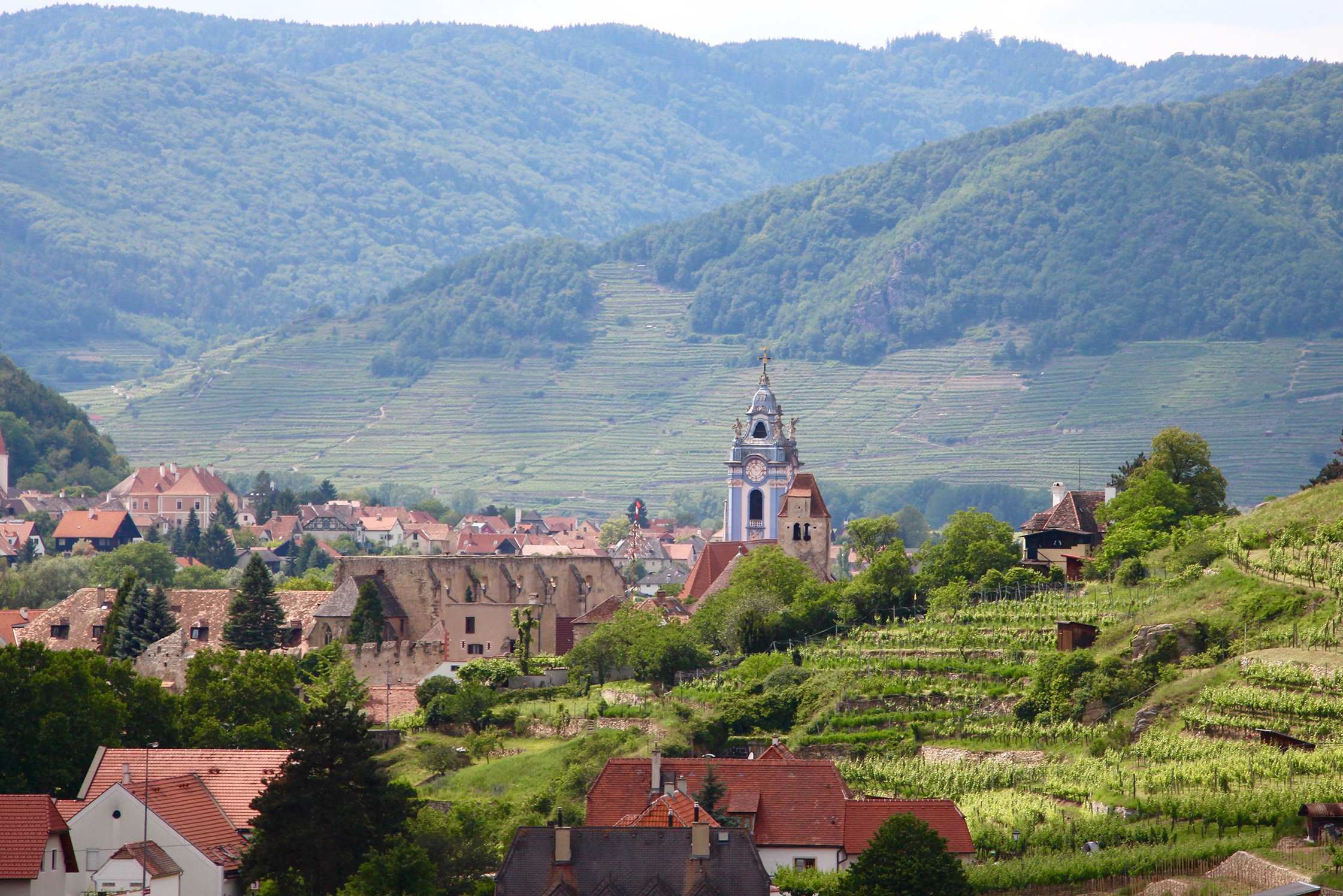
Austria’s ground zero for the country’s great Grüner Veltliner and Riesling is an hour’s drive west of Vienna. While I feel it’s not fair to say one region is better than another when comparing Kremstal, Kamptal, and Wachau, Austria’s elite spots for these grapes, Wachau certainly gets heaped with the most praise and is home to a tremendous number of great producers, including our friend Martin Mittelbach and his historic Weingut Tegernseerhof.
The far eastern side of this appellation’s steeply terraced, ancient gneiss rock hillsides, partially covered in their lower sections and east-facing flanks with windblown, calcareous loess is where the recently organic certified Tegernseerhof has operated since 1176. While vines existed in the area for hundreds of years before the arrival of the monastic order of Tegernsee, Tegernseerhof is the oldest Wachau winery in the Loiben area. Owned and operated by the Mittelbach family for the last five generations, dozens of winegrowers are in the area now, including two of Mittelbach’s neighbors and close family friends, the Knolls and Alzingers.
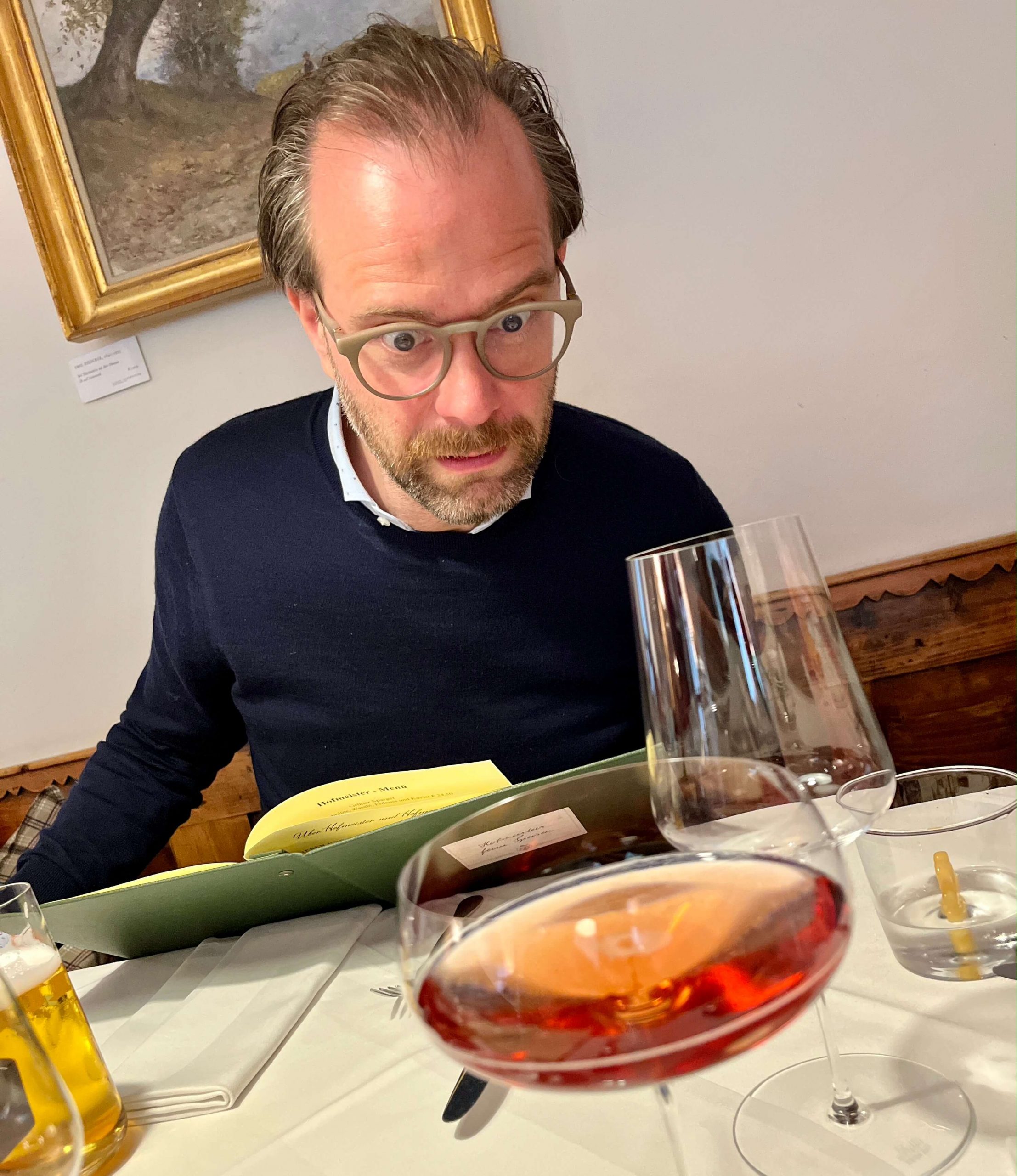
Martin’s stylistic difference from his friends lies mainly in how he now organically farms and uses only stainless steel for fermentation and aging—and his comedic personality. He is also slightly stricter about excluding berries that are concentrated by good botrytis (perhaps even more rigid than the already rigorous Alzinger, and far removed from Knoll, a traditionalist with a light touch) in his classic still wines from Grüner Veltliner and Riesling. Similar to the others, however, skin contact is used depending on the health of the berries: the better the health and the greener the berries, the longer the maceration before pressing. His vineyard and cellar choices leave Martin’s wines naked with a starkly clear view between aspects, slopes, bedrocks and topsoils, and genetic material from each particular site of his top wines. Always straight and intentionally slow to unfold upon opening in the Smaragd range, his Federspiels engage with full force upon opening. To better understand terroir with an extremely fair-priced wine, Tegernseerhof is second to none—make sure you do more than just taste his Smaragds; it’s better to drink them over some hours next to each other to let the differences truly reveal themselves. The Federspiels are a different story, though, bulletproof and hold very well even a month in the fridge after opening with a little nip here and there.
Despite similarly hot weather, the 2023 vintage presents a clear stylistic separation from the 2022 vintage wines. The hot and dry weather of the 2022 season was buffered by the previous year’s cold and wet weather—refilling the well and giving the vineyards greater resistance against the relentless sun.
Vinea Wachau Vintage Explanation (taken from their website):
The wine year began with cool, humid weather, which delayed the bud break. From mid-May, the sun came out continuously and provided a boost of vegetation. Thanks to the rainfall in spring, the vines were optimally supplied with water; only the hot summer months produced very dry conditions. The late flowering indicated a late harvest year. In August, the subsequent summer temperatures accelerated the ripening of the grapes. On August 26, a hailstorm destroyed parts of the grapes in Wösendorf, Joching, Weissenkirchen and partially the Spitzer Graben. Dry and windy weather conditions allowed the injured berries to dry well. These were removed by precise handwork.
In the eastern Wachau, harvest started in the second week of September with dry and warm summer temperatures. Large maturity differences between the individual vineyards were recognizable and strongly influenced by the vineyard management. As the harvest progressed in the eastern part of the Wachau, the ripening phase of the grapes in the west was delayed, so that harvest in Spitz was not completed until the beginning of November.
At first, when tasting the wines of our Wachau stable exclusively made of organic growers—Muthenthaler, Tegernseerhof and Veyder-Malberg, the latter two represented in select markets and the former in all U.S. states—in their earliest phase in May 2024, some just before bottling and most shortly after, they were lighter and restrained. I tasted them all again in November 2024 and everything fleshed out while maintaining a degree of elegance closer to the 2021s. The 2023s are neither hulking like the denser 2022s nor with the tight mineral core and piercingly zingy acidity of 2021. They play in the middle, less solar-powered than 2022 and perhaps more immediately fluid than 2021: depth without flex. We found similar results over 500 km away with the comparison of the 2021 to 2023 vintages at our Rheinhessen superstar, Katharina Wechsler.
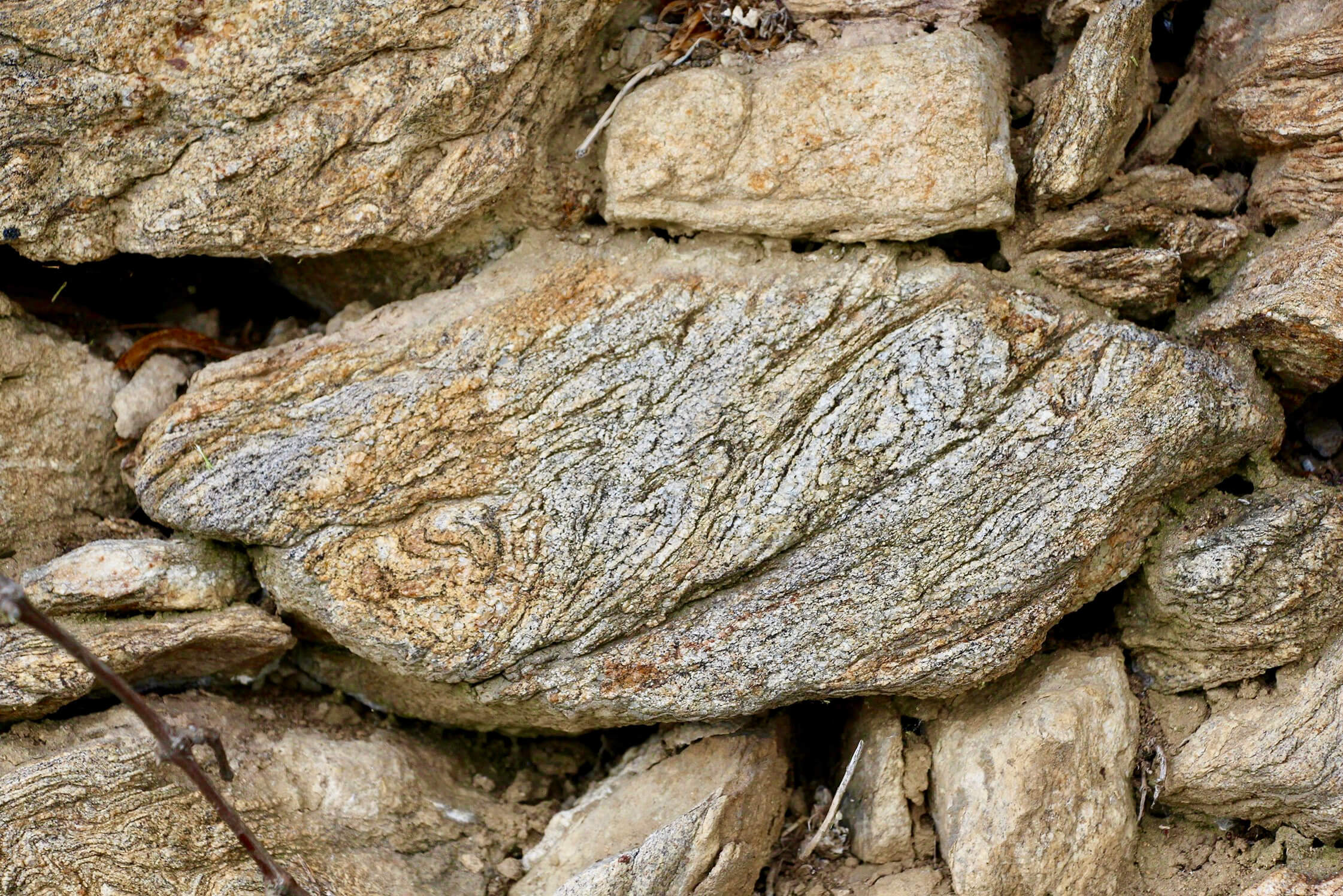
The 2023 Dürnstein Grüner Veltliner Federspiel is grown on alluvial river sands and loess, which brings bright notes of spice, honeysuckle, and white pepper to the forefront and a broader palate richness. The mineral nose is further enhanced by notes of dried yellow and green grasses, and white radish, while the deep and glycerol back palate is characterized by Indian spices and a slight minty, lime finish. Between the Veltliners in Tegernseerhof’s range, this is the easiest and most universal for all palates.

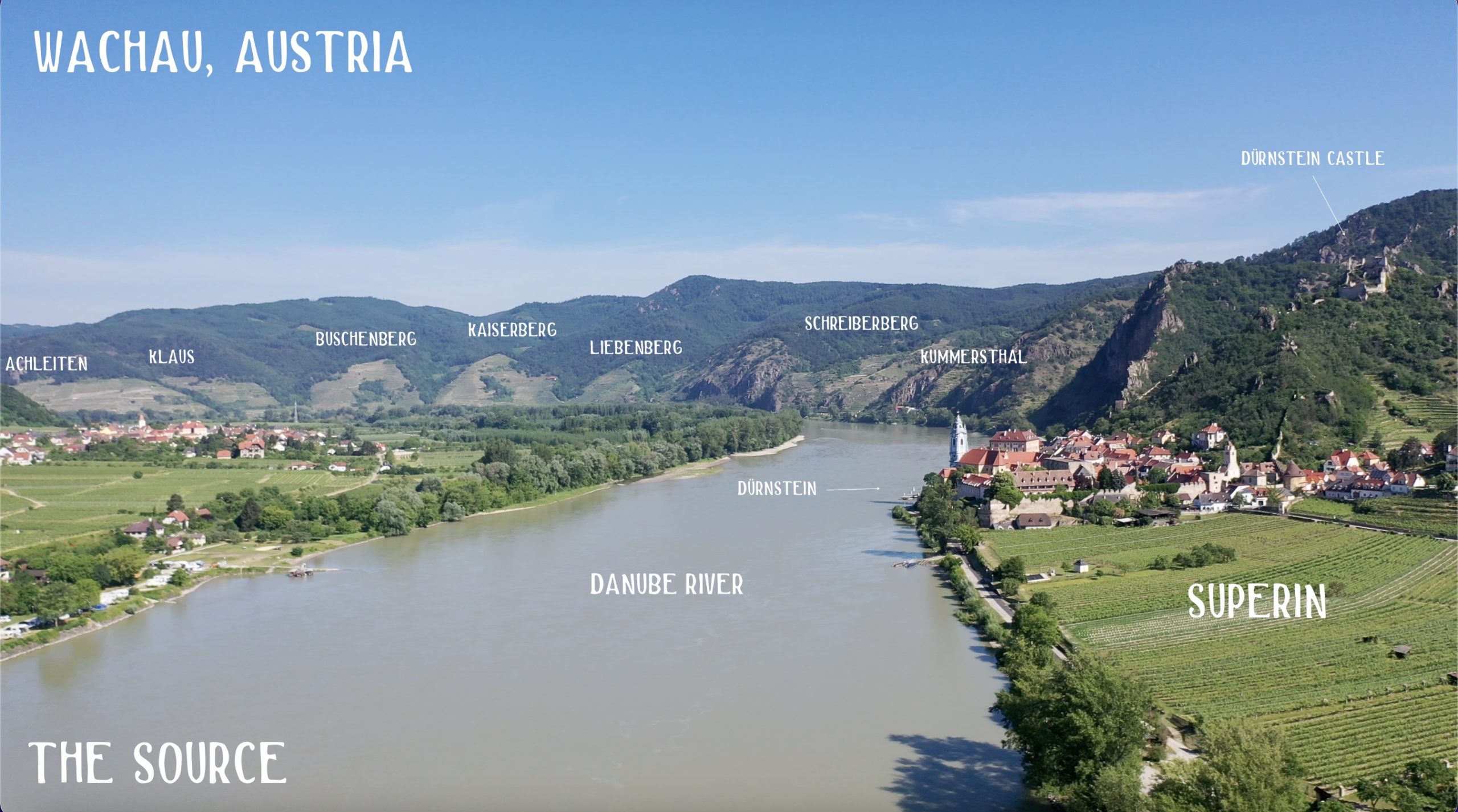
Grown in a parcel only a few meters from the Danube and right at the doorsteps of the historic rock village, Dürnstein, Tegernseerhof’s 2023 Superin Grüner Veltliner Federspiel is quite different from the Dürnstein bottling, as is always the case. Here, the Danube did some sculpting and stripping away of soil during flood periods while replacing it with new river sediments. This erosional process carved deep enough to expose the gneiss bedrock below. In other Grüner Veltliner vineyards used for Federspiel, they are often covered in a deep enough topsoil of loess and alluvial sediments with very little, if any, root contact with gneiss bedrock far below. The dynamic of gneiss as a dominant feature of this vineyard creates a Federspiel Grüner Veltliner with a much more vertical, mineral, saltier, and deeply textured palate. This is the Grüner Veltliner for the mineral seeker, while the other may be better suited for those searching for more obvious deliciousness.
Arriving later in the year from Tegernseerhof are his Smaragd Riesling crus, Kellerberg, Steinerthal and Loibenberg, with the Grüner Veltliners Loibenberg, Schütt, and Höhereck.
Nizza, Piemonte
(Available from The Source in All U.S. Markets)
The arrival of Sette’s new wines is especially anticipated. Earlier this year, Gino (Sette’s visionary founder) came to New York to show his crazy-good wares. The plan was to release them shortly after, but the order fell through at the last minute due to tariff concerns, and what little stock we had was quickly wiped out. The wines featured in New York during his visit are finally arriving now. It wasn’t easy to watch Gino pour so much into a launch only to have the release unexpectedly delayed by three months, which has only elevated the anticipation, and they’ll be worth the wait.
Sette joined our portfolio with their inaugural 2018 vintage. I first encountered them, oddly enough, in a blind tasting with a bunch of vigneron in Chablis, with most of the other wines being Burgundies. Their 2018 Barbera d’Asti so clearly stood out that I messaged them immediately to ask about their U.S. distribution.
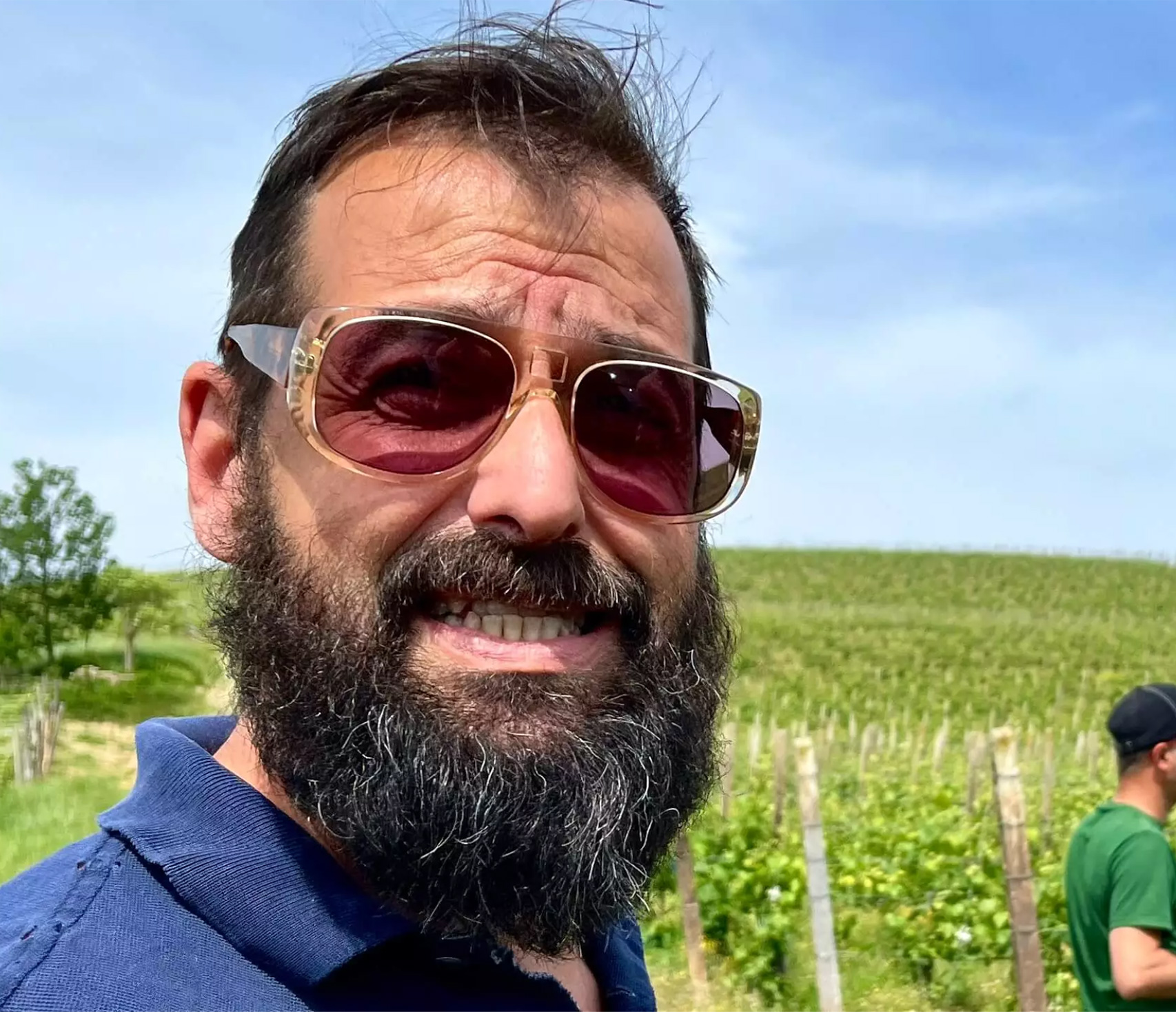
But then I hit pause; I couldn’t help but question Barbera as Sette’s centerpiece. The world is full of Barbera, often cast in a supporting role among the ranges of Barolo and Barbaresco growers, a box easily checked with familiar names from prestigious appellations. And while Barbera is often compelling, its most exciting expressions usually come from outside the Langhe.
“I never focus my brain on a grape variety,” Gino said. “I’m European and I strongly believe the terroir is the most important thing in wine production. Barbera is only a rustic grape, able to produce great quantities of concentrated wines. It’s not so hard to grow, and probably originally from the south of Italy. But at the same time, it’s the best grape in the southern part of Asti province, one of the driest areas in Europe, with incredibly white and Mediterranean light, with shorter steep hills and a complex mix of soils from different geological eras.”
The broader Monferrato area is indeed best suited for Barbera, and Nizza Monferrato is its epicenter when considering its arid climate. Many producers there capitalize on the natural advantage but seem rooted in a style centered on ripeness, structure, and longevity, often at the expense of energy or immediacy.
Sette, by contrast, acts as a foil, not to highlight Nizza, but to offer a fresh interpretation of its potential. Sette’s wines are deep, but with lift: brighter, fresher, and more finely knit. Gino and his partner, Gian Luca Colombo, have created a tightly woven framework with an immense aperture. These are Nizza wines of spring and early summer fruits rather than the region’s typically late summer and fall fruit profile.
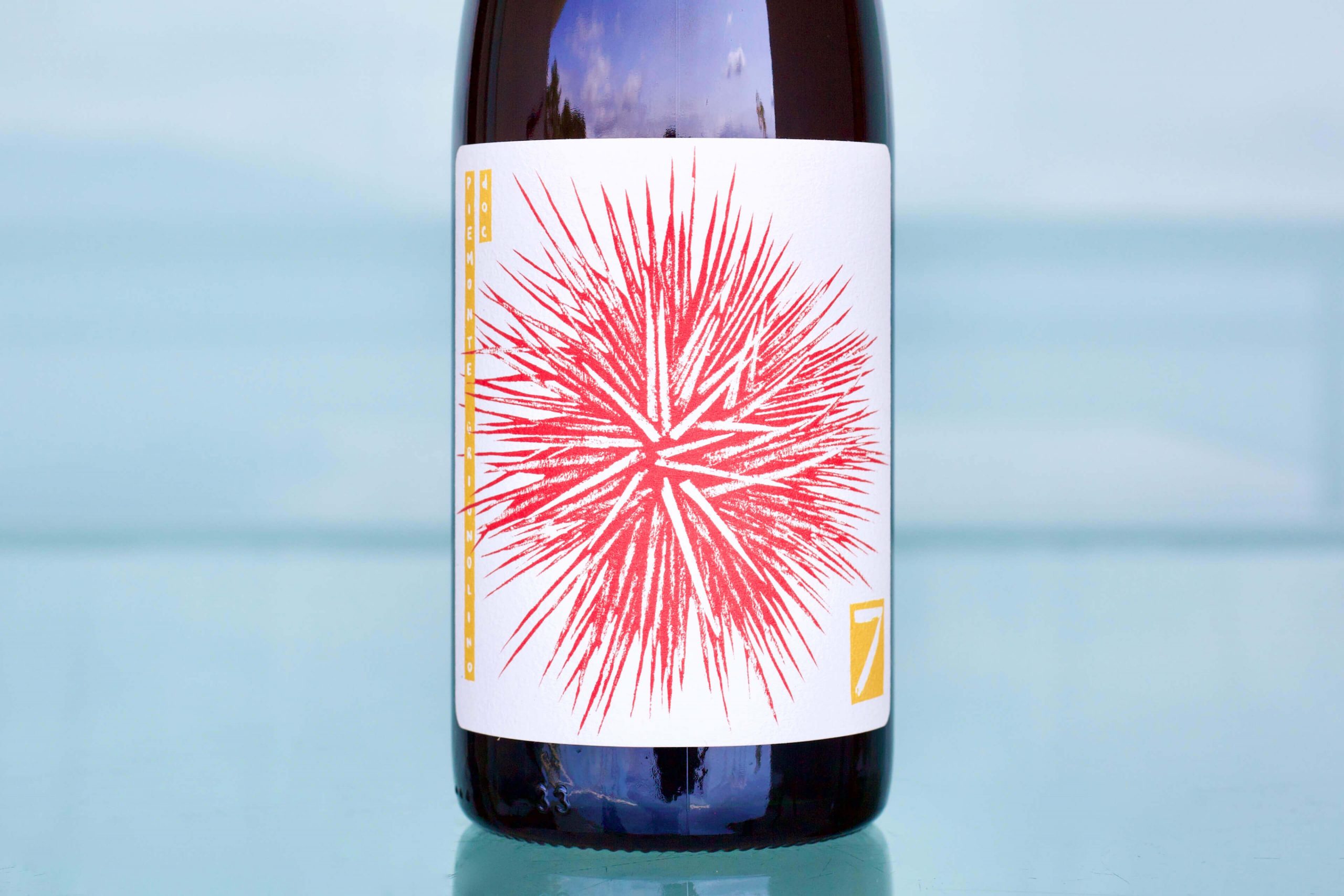
They’re catching fire; well, as much as this overlooked appellation allows, with labels that turn heads and wines that live up to them. They’re finding their way onto lists and shelves across Asia, Europe, the Southern Hemisphere, and through us, across the U.S. The curious thing? You still won’t find a bottle in any restaurant or retailer within the D.O.C.G.’s borders.
Gino says this is just the beginning, but how far can they push this grape? Since 2018, they’ve only just begun the biodynamic terraforming of their eight-hectare parcel. Yet in just four years, they’ve bottled the most compelling Barberas I’ve ever put to my nose and mouth.
The 2021 harvest was probably the hottest harvest they’ve ever had, but it helped that the temperature ranged widely between day and night. The result is, as Gino describes the Barbera wines, “Deep and austere, and able to age for a long time.” My first encounter with the finished 2021 Nizza just over two years ago, along with the 2021 Nizza ‘Particella B8’, with the former resting in concrete after ten months in Stockinger 50-hl oak vats, and the latter in Tava amphoras, was in their final stage before bottling. It was already cold in the cellar, and these wines gave me deeper chills—the best kind. Both underwent a submerged cap fermentation for 42 and 43 days, respectively, and were untouched until pressing. A submerged cap, believe it or not, is a historical method for Barbera in this area, and here it upped the charm meter to blinding heights.


Tasting from vat just before bottling can be one of the most expressive moments of a wine’s life, perhaps they’re in their most alive and radiant state. But it can be deceiving. I’ve fallen for wines at this stage only to find them dulled in bottle, with some never regaining that form. Like a baseball scout watching a 17-year-old throw over 100—it’s promising, sure, but the majors demand more than raw talent. With Sette, the pieces are there: great vines in a great place, and two globally minded, skilled, idealistic winemakers capable of shaping them into something more and catching them in their most beguiling state.
Tasting just after racking before the final sulfiting is also an extremely memorable time in a wine’s life. You catch it in its moment of becoming: reinvigorated after its long rest, tuned up, diploma in hand, primed and wide-eyed for the next stage. But during these two phases—racking and bottling—some change costumes before the next act. Others close the last page on the epic first book of a thrilling trilogy and begin their second. Few make it across the narrow bridge between raw potential and lasting presence. Sette’s wines made the crossing in full form.
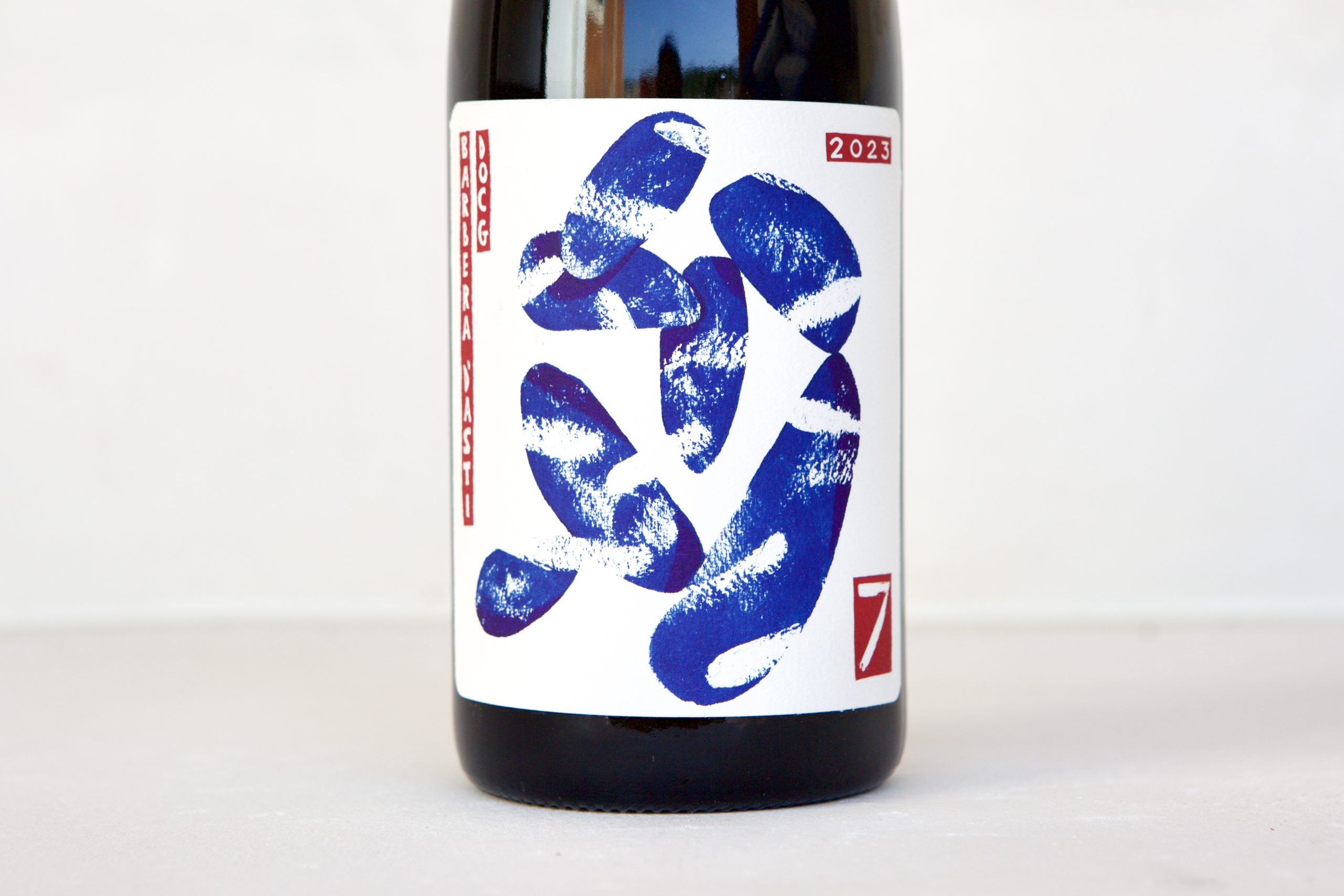
I never expected to be so taken by Barbera until Sette appeared behind a black blind-tasting sleeve in Chablis. And I don’t see myself pursuing Barbera broadly; just like I wouldn’t have become a Baden Spätburgunder believer if not for meeting Alex Götze in Burgundy, before he and Christophe developed Wasenhaus and shook up the perception of Germany’s potential with Burgundian varieties. But these curveballs—the ones that challenge our assumptions— keep this work alive, no matter your stance. Without the constant surprises around overlooked corners, it keeps everything fresh and fully ignited.
Also on this boat is the 2023 Barbera d’Asti, the bottling that put Sette in front of me. Composed entirely of Nizza fruit from the same parcels on calcareous soils rich in chalk and fragmented limestone rock, this was 36 days with a submerged cap in concrete and aged another ten days in concrete before preparation for bottling. The 2023 Barbera d’Asti is revelatory, and a forecast that answers exactly my question of how much further these guys will take it, at least up to 2023. Just watch out. You might fall head over heels with the Barberas here. For anyone already convinced by this grape, they may leave their other darlings at their altars.
And then there’s the 2023 Grignolino d’Asti, which we could sell a literal boatload of—that ethereal and charming Peter Pan of a wine. This is a grape about which I’ve extensively documented my strong interest, and we have four different growers of it that we import. I’ve always followed beauty in wine, and this grape has it in spades. Again, Gino: “I well know everyone loves this wine and this grape; it’s light in color, easy to drink and understand, but it is not the focus of our research.” It comes from two rented plots near Asti, on very sandy soils. “We don’t like to manage this grape as if it were Nebbiolo, but we like to exalt its aromatic side rather than its structure. We didn’t want to bring too much tannin into the wine, so we managed it with a soft extraction of two pump overs per day over ten days in steel, then aging in Tava ceramic amphoras for eight months.” It’s a doozy!
“Dry, dry, dry, dry,” Gino said, explaining the vintage. “My area was the driest in Europe that summer, and we have lost around 40%. Fortunately, the temperature never went over 34°C.”
I tasted each of these wines again in their finished state with Remy, Gino and Giovanna Bagnasco (of Brandini) at Brandini’s killer new white-table-cloth restaurant in La Morra. Perhaps I’ll return to that story one day in the future with the fourth of four parts of our 41-day Fall 2024 European bender that started in Portugal and Spain, then to Austria and Germany, France, and finally to Italy before boomeranging back through southern France and finishing in Spain’s Navarra. At this moment, I don’t have time to write it, and there isn’t enough room in this newsletter for the story!
I also tasted a set of these wines before publishing this newsletter. My conclusion is nothing short of extremely high hopes and expectations for wines that started as absolute thrills and have risen from their gorgeous raw states into perfectly polished wines finished without any loss in quality. I’m stunned, and you will be too.
Aglianico del Vulture, Basilicata
(Available from The Source in All U.S. Markets)
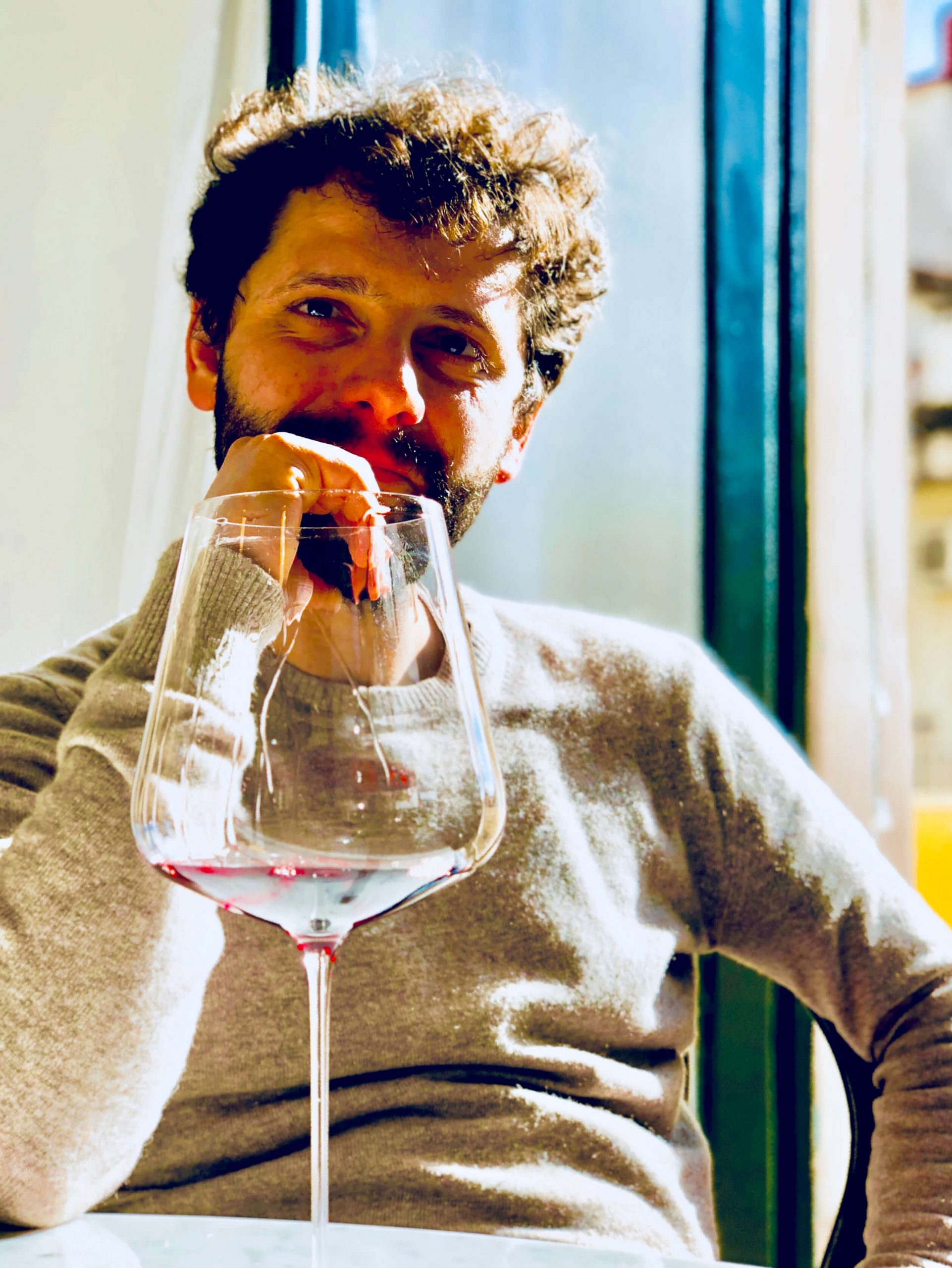
Aglianico is one of Italy’s noblest grapes, yet it’s rarely granted a seat at the head table. From Nebbiolo’s Alto Piemonte and the fog-bound Langhe, the eye sweeps southeast across Sangiovese country, and most stop there. Few venture into the broken lands between Campania and Basilicata, but it’s in that rugged seam of the peninsula where Aglianico took root millennia ago—dark, coarse, and full of fight. Skip it, and you’ll miss the backbone of Italian wine culture—its most ancient and authentic. Worse, you’ll miss the wine.
Some call Aglianico the Barolo of the south, but Nebbiolo barely casts a shadow next to its depth of color. If Nebbiolo is power ballet, Aglianico is bare-knuckle. Tannin, acid, darkness; it brings all three, yet too many growers try to dress it up—white-tablecloth ready. But Aglianico is not a velvet monarch. It’s a natural-born warrior in well-worn boots and iron-age armor covered in dirt, smoked and grilled meat, ferrous, and bathed in aromatic herbs and ash—an echo of antiquity. Madonna delle Grazie doesn’t soften it. Yes, their wines have polish—a quiet refinement—but the scorched imprint of Vulture’s violent past and the rough, talon-like hands of the vigneron still show.
Aglianico is best left uncompromised—unmoved by trend, shaped more by patience than by polishing technique. I want an Aglianico to take us back two thousand years to Horace, the famous Roman poet born in Venosa, the hometown of Madonna delle Grazie, who wrote verse in praise of rustic wines like these. “Vina liques bene: nec dudum subacta valet massa.” (Strain the wine well: the rough lees unsettle if not long subdued.) That is Aglianico. And that’s why even the current releases of MdG’s starting wines are four and five years past their vintage date and cost the same as a decent Prosecco. The others, the top of the range (Bauccio and Drogone ) are as far along as ten years before release and are still going for a song.
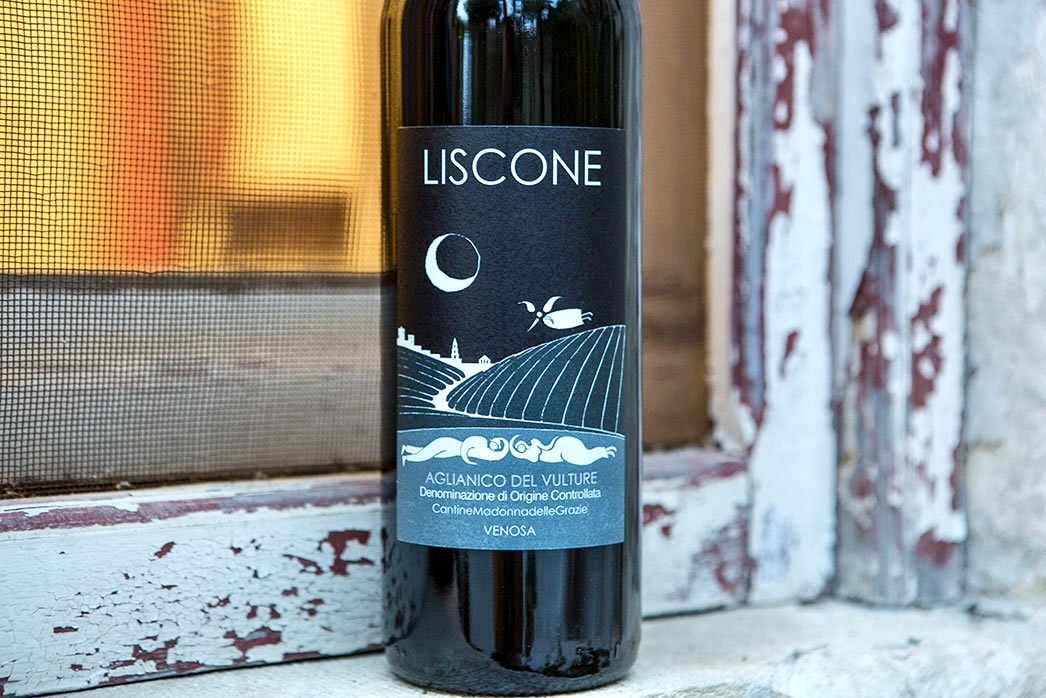
Madonna delle Grazie’s entry-level Basilicata Aglianico wines, Messer Oto and Liscone, are still some of the most sought-after in our portfolio for restaurant by-the-glass programs. Since the first wines were imported almost ten years ago, many of our top restaurants immediately reserved them up by the half-pallet. The Latorraca family, with their extremely astute and well-educated sons, Paolo and Michele, in the cellar and the vineyard with their father, Giuseppe, were relatively new wine producers that started bottling their own wines almost twenty years ago, but have been growing grapes for generations. Initially, they simply couldn’t keep pace with our demand, mostly because Immacolata (Irma), aka mamma, couldn’t hand-label every bottle herself fast enough. These days, they’ve given Irma a break with a new labeling machine, and our ability to get stock on a larger scale is easier, despite the continued port delays that started in 2020 and haven’t found any normal rhythm outside of a chaotic one.
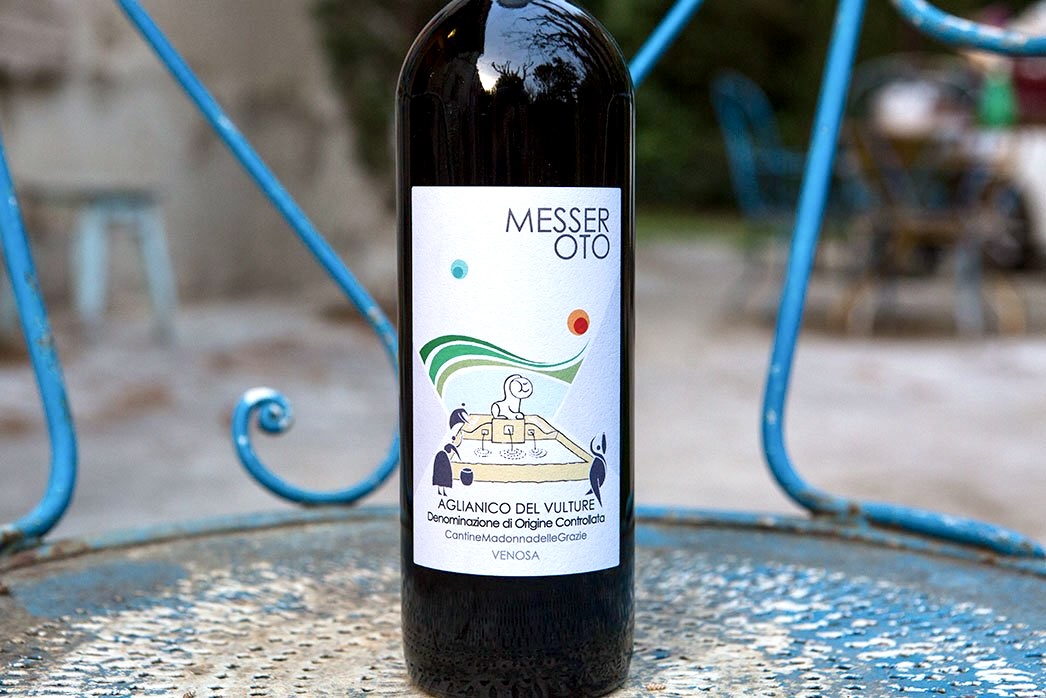
The two-hectare parcel that makes up the 2021 Aglianico del Vulture ‘Messer Oto’ is the family’s youngest vineyard in Venosa’s Fiano di Camera district, inside the Aglianico del Vulture DOC. A location 420 meters above sea level on volcanic soils full of limestone cobbles bears this highly expressive and often bright Aglianico, surrounded by more beastly dark brethren. The grapes are a massale selection of small berries with thicker skins and elevated polyphenol content that result in a deeper red color: a distinct separation from the near-black hue typical of the cantina’s older vines rooted in black volcanic clay. These grapes are typically picked in mid-October and are the first brought in for red wine production. While the climate is consistent across their holdings, this site ripens earlier due to its better drainage than parcels like Liscone, Bauccio, and Drogone. (The latter two aren’t on this container but are two of the cantina’s special reds. Drogone is one of my favorites in our entire portfolio.)
Fermented and aged entirely in stainless steel, Messer Oto is perhaps their most versatile red, perhaps the exceptional little break inside their range of this variety’s naturally rustic disposition. Its time in steel preserves its bright fruit, earthy mineral tones, and vivid acidity, with a nose filled with red and purple fruits and a palate both lifted and slightly dense. The 2021 vintage was remarkably balanced with typical spring conditions, a dry July, and helpful rains in August and September. No harvest rain meant clean fruit and optimal timing. From 2020 onward, they’ve been adjusting to climatic shifts by picking a bit earlier, resulting in what Paolo Latorraca describes as “surprisingly low pH levels—sometimes even lower than in cooler years.” In Messer Oto, this translates to a freshness that underscores its drinkability and makes it a standout for those seeking a more agile expression of Aglianico.
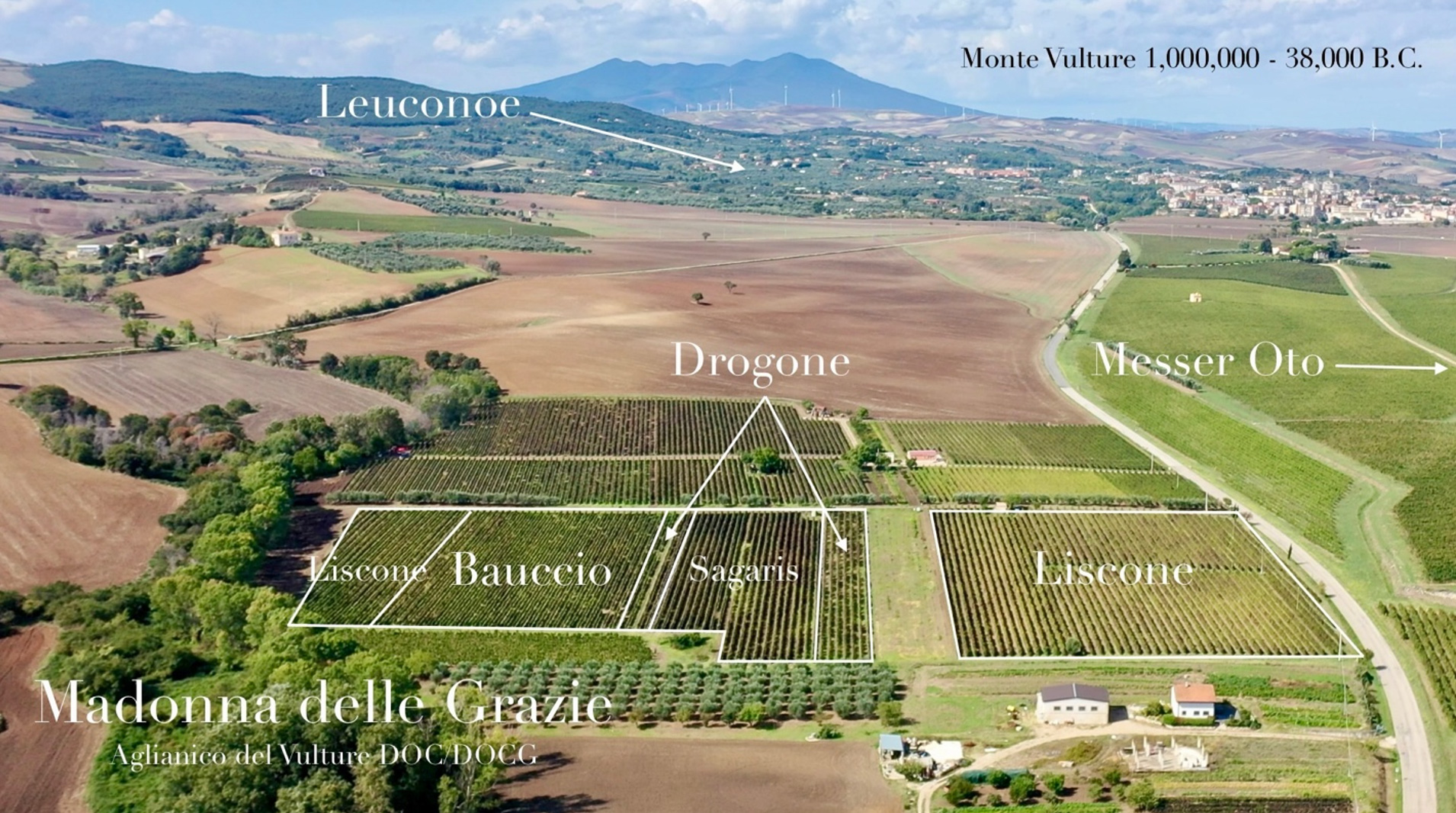
While the 2020 Aglianico del Vulture ‘Liscone’ is only the second Aglianico up in the cantina’s range of reds, it can easily rival many producers’ flagship bottlings. It starts seriously, like Pacino in a Coppola frame—eyes shadowed, jaw set, silence heavy—but finishes in the palate with equal charm and emotional lift. It punches so far above its weight class that it feels almost absurd. (I’ve told as much to the Latorraca family, followed by tongue-in-cheek threats to dissuade them from increasing it!) Liscone is made from 30+ year-old vines that sit at 430 meters—just three kilometers from Messer Oto—but harvested a week later, typically at the end of October. The difference lies in the volcanic rock-derived clay soils, which retain more water and slow ripening, not in air temperature or exposure. The older biotype in Liscone (the same for their Bauccio) has larger berries and clusters, and yields an average of 50–55 hl/ha (70–80 quintali; ~2.8 tons/acre).
The 2020 vintage was classic with a regular winter and spring, a summer without heat spikes or extended dry periods, and helpful August rains that set the stage for a strong finish. September brought sun without searing heat, making it ideal for tannins that teeter between fine and gritty. The resulting wine is floral, fruit-laced in darker shades, white pepper, and impressively integrated with equal parts structure and charm. The extra time before release allowed it to settle into its form, and it’s now firing on all cylinders. Liscone is a complete expression of clay-grown Aglianico with a dangerously low price for what’s in the bottle
And then there’s the 2024 Basilicata Bianco IGT ‘Leuconoe’: Minerva born of Vulcan—a white wine from Aglianico, the darkest and most rugged noble Italian red variety. We brought in a few cases nearly a decade ago, thinking it a curiosity. Now it’s one of the most sought-after wines in our portfolio, on its price, quality, and sheer beguiling uniqueness. It proves a point few thought to make: Aglianico doesn’t just rule red; it can stand tall without its skin, its armor. Strip it down and it’s still layered and commanding. It flips expectation and shows, in yet another light, just how deep Aglianico’s complexity really runs.
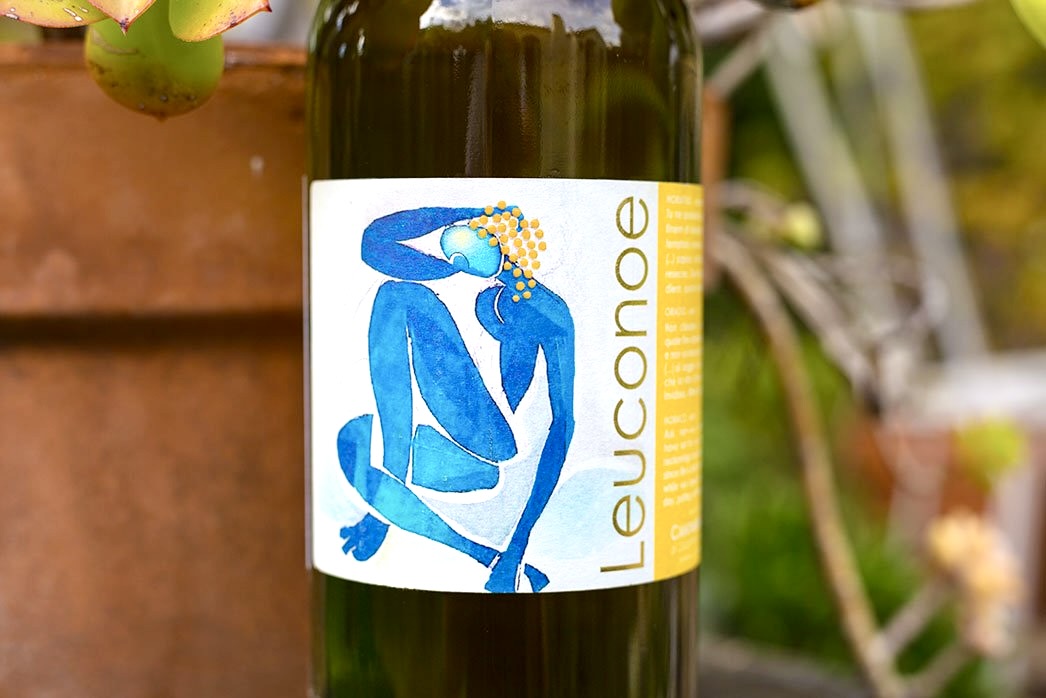
The 2024 vintage was tough from the start. A long heat spell arrived in late spring and got its grip on the region until late July. In their Venosa-based vineyards, the old vines and clay-limestone volcanic soils held their ground, and the team made the necessary call to harvest two weeks early to preserve acidity and balance. The results surprised even them: low pH, vibrant structure, a full robe of complexity, and a wine that cuts like a blade but finishes with grip and grace. This is Aglianico reimagined— Guillermo del Toro style: vivid, textural, and quietly radical. Sadly, Leuconoe’s tiny production and ever-growing demand mean you’ll need to move fast. It’s strange that a seemingly insignificant wine should pique such great interest as Leuconoe.


